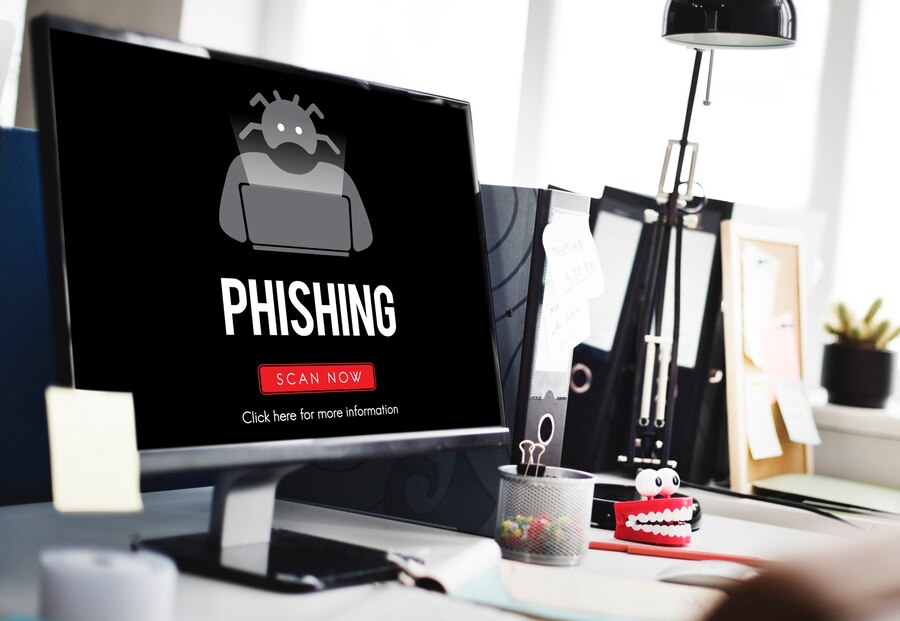Phishing scams have become one of the most common and effective tactics used by cybercriminals to steal sensitive information. These scams rely on deception, often masquerading as legitimate emails, text messages, or websites to trick individuals into revealing personal data such as passwords, bank details, or social security numbers. As phishing techniques evolve, staying informed about the latest tricks is crucial to keeping your digital identity and financial information safe.
What Is Phishing?
Phishing is a form of social engineering where attackers impersonate trusted entities to manipulate victims into taking harmful actions—usually clicking a malicious link, opening an infected attachment, or entering sensitive information on a fake website. Phishing messages may appear to come from your bank, employer, government agencies, or even friends and colleagues.
The Latest Phishing Tactics to Watch For
AI-Generated Messages
Scammers are now using AI tools to craft more convincing and grammatically correct messages. These emails are harder to distinguish from legitimate ones, especially when they contain personalized details gathered from data breaches or social media.
Business Email Compromise (BEC)
In BEC scams, attackers spoof or hack into corporate email accounts to impersonate executives or vendors. Employees may be tricked into wiring funds or sending sensitive company data. These scams are sophisticated and often targeted.
Smishing and Vishing
-
-
Smishing is phishing via SMS. You might receive a text message that looks like it’s from your bank or a delivery company asking you to click a link.
-
Vishing involves voice calls. A scammer may pose as tech support or a government official to get you to reveal information or grant access to your device.
-
QR Code Phishing
Known as “quishing,” this scam involves QR codes embedded in emails or on posters that lead to fraudulent websites. Users often scan QR codes without thinking twice, making it a growing threat.
Fake Security Alerts and Account Notices
These messages pretend to warn you of suspicious activity in your account and prompt you to click a link to “secure” it. In reality, the link leads to a spoofed site that steals your login credentials.
How to Spot a Phishing Attempt
-
Check the Sender’s Email Address
Look for subtle misspellings or inconsistencies in domain names (e.g., [email protected] vs. [email protected]). -
Watch for Urgent or Threatening Language
Messages that demand immediate action, threaten consequences, or create panic are common phishing tactics. -
Hover Over Links
Before clicking, hover your mouse over links to see the real URL. If it doesn’t match the sender or looks suspicious, don’t click. -
Look for Generic Greetings
Phrases like “Dear customer” or “Dear user” instead of your actual name may signal a phishing email. -
Beware of Attachments You Didn’t Expect
Never open unexpected attachments, especially those with file extensions like.exe,.scr, or.zip.
How to Protect Yourself
- Use Multi-Factor Authentication (MFA)
Even if your password is stolen, MFA adds an extra barrier that can stop unauthorized access. - Keep Software Up to Date
Updates often include security patches that protect against known vulnerabilities. - Install a Reliable Security Suite
Antivirus and anti-phishing tools can detect and block many phishing attempts before you fall victim. - Educate Yourself and Others
Awareness is your best defense. Talk to coworkers, friends, and family about phishing, especially those who may be less tech-savvy. - Report Phishing
If you receive a suspicious email or message, report it to your email provider or IT department. In the U.S., you can forward phishing emails to [email protected] or [email protected].
Phishing scams are constantly evolving, using more sophisticated techniques to trick even the most cautious users. By staying informed about the latest threats and learning how to recognize the signs of phishing, you can greatly reduce your risk of falling victim. Vigilance, critical thinking, and proper cybersecurity hygiene are your best defenses in the ongoing battle against online scams.
Would you like a visual guide or printable checklist to help identify phishing messages more easily?

